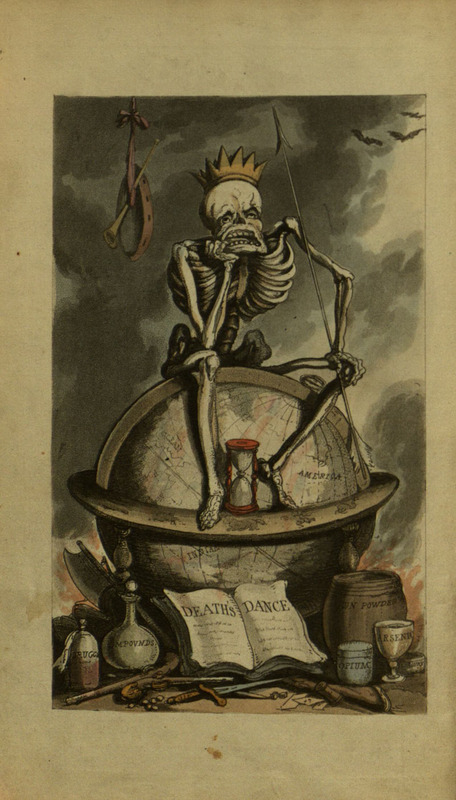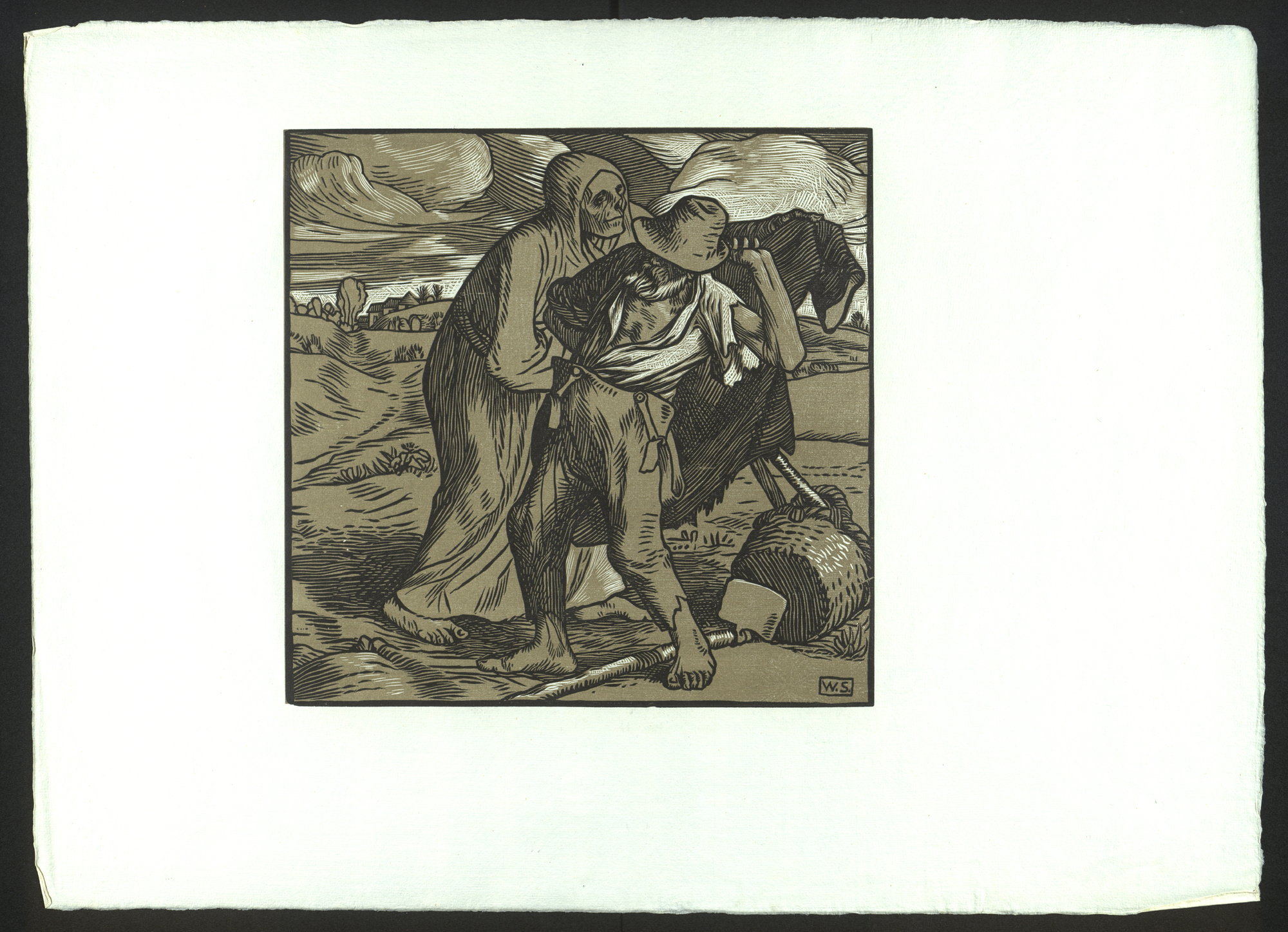No Bones About It: An exhibit of spooky skeletons
Books about Bones
We have chosen three English dances of death for this exhibit, one each from the 18th, 19th, and 20th centuries. Each takes a different approach to the topic of the dance of death: moralization in the case of The dances of death (1788), satire for the English dance of death (1815), and quiet acceptance of death for The doings of death (1901). Added into the mix is a nineteenth-century pamphlet about the dangers of swearing that doesn’t show any images of bones but features them quite prominently in its narrative.
The dances of death, through the various stages of human life: wherein the capriciousness of that tyrant is exhibited: in forty-six copper plates; done from the original designs.
David Deuchar (1743-1808), engraver
Christian von Mechel (1737-1817), text
N7720 .H6 .A45
The Scottish etcher and engraver David Deuchar’s Dance of Death is not actually a straight copy of Holbein’s Dance of the Death. Instead, it is a mixture of copies of Holbein’s actual work and of woodcuts from a 1555 book of woodcuts claiming to be by Holbein. The frontispiece and the French text meanwhile are taken from the Swiss art dealer Christian von Mechel’s edition of Holbein’s works. All in all, a rather strange little pastiche.
The English Dance of Death.
William Combe (1742-1823)
PR3359 .C5 E5 1815
The illustrations in this two-volume depiction of the Dance of the Dead may have been influenced by Hogarth’s art, including humorous details from contemporary life. Death’s appearance here is more satirical than horrifying, and although the captions retain a stern moralizing tone, the images themselves seem less aimed at instruction than at amusement.
An Account of the awful death of Richard Parsons, whose flesh rotted on his bones agreeably to his impious wishes when disputing at a game of whist.
BV4627 .S9 A2 1800z
Although there is a disappointing lack of illustrations in this short little pamphlet, the story is too interesting not to include it. Apparently Richard Parsons was gambling and swore an oath that the flesh should rot off his bones if he was lying. Let this be a lesson to us all never to swear — or at least, never to swear with such specificity — because that’s exactly what happened, according to the pamphlet.
The Doings of Death.
William Strang (1859-1921)
N7720 .S8
William Strang was a late 19th-century Scottish engraver and artist. The Doings of Death (1901) features twelve chiaroscuro depictions of death in a variety of social roles. Death in Strang’s depiction neither surprises his victims nor drags them off, but rather presides over the moment of death and even sometimes offers assistance, as in the case of the farmer whom he helps with his coat.



